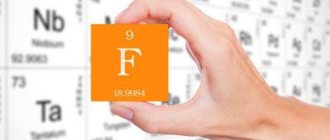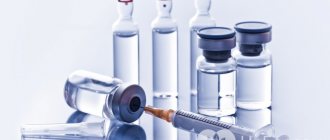The negative impact of toxic substances causes chronic poisoning of the body in both adults and children. The time period can range from several weeks to several years. Penetrating and accumulating in the body, such substances cause chronic diseases. Chronic poisoning can serve as a consequence after an acute form of intoxication.
How do chronic poisonings develop?
Chronic poisoning develops slowly. This makes diagnosis difficult and misleads the victim, since the symptoms are attributed to another illness, heavy activity, and forces the person to postpone a visit to the doctor.
Chronic poisoning refers to an occupational chronic disease. A person works in an enterprise that involves toxic substances without observing safety precautions.
Industrial toxic substances reduce the body's resistance to infections. Due to this, protein molecules are formed in the blood, which provoke the creation of specific antibodies. The body may react to the pathogen with an allergy. The amount of poison ingested does not matter. The person's condition is deteriorating.
What causes chronic poisoning
This type of poisoning is influenced by the industrial factor. It is more difficult to get poisoned in everyday life. Exposure to the following substances is considered to be the cause of chronic poisoning:
Chlorine. Occurs when safety rules in the workplace are violated. Chronic poisoning may occur. A person will notice a suffocating cough, breathing will be difficult, and pulmonary edema is diagnosed.
Mercury. The first thing that is affected is the central nervous system. Signs may include constant nervousness, depression, and headache. The gastrointestinal tract begins to malfunction and profuse sweating begins. Systematic exposure to mercury causes tooth loss, oral diseases, stomatitis, and gingivitis.
Phenol. With regular exposure to the body, phenol causes increased blood pressure and headaches. You will feel dizzy and feel apathetic;
Bromine. Systematic exposure to small doses will cause a severe suffocating cough and frequent runny nose. Lymph nodes become inflamed. The tongue will change its color to brown.
Formaldehyde. Chronic poisoning is an occupational disease of people whose work is related to particle boards and fine particle boards. Poisoning is possible if the apartment has a large number of pieces of furniture made from materials that do not meet the required quality standards. A person quickly gets tired from exposure to formaldehyde, his sleep is disturbed, and a malfunction of the gastrointestinal tract occurs.
Carbon monoxide. Gas intoxication affects the functioning of the cardiovascular system. The risk of atherosclerosis increases. It can happen at a gas plant, in an engine production facility, or in a private garage.
Lead. Affects the central nervous system, causing apathy, unstable emotional state, depression. A person suffers from a headache and notices that his memory has deteriorated. The level of hemoglobin in the blood decreases. The digestive system, liver and kidneys suffer.
Poor quality food causes chronic food poisoning. You should use household chemicals and those used to kill parasites and treat plants with caution. The presence of bad habits also causes intoxication. Smoking leads to slow but sure poisoning of the entire body. Signs of chronic nicotine poisoning will be a feeling of dryness in the mouth, disturbances in the functioning of the heart, a feeling of suffocation, nervousness, and headache.
Characteristic symptoms of chronic poisoning
A negative impact on the body is caused by symptoms that do not attract much attention until they begin to intensify. Symptoms of chronic poisoning:
- imbalance in the emotional state of the victim. The feeling of excessive excitability can sharply change to apathy, and an aggressive state - to depression;
- the functioning of the gastrointestinal tract is disrupted. A person notices constant belching, heartburn and pain in the stomach;
- Body temperature fluctuates from high to low. Increased sweating;
- frequent constipation;
- dizziness;
- feeling of bloating;
- cramps of the arms and legs;
- brittle nails and hair;
- fainting state;
- difficulty urinating with changes in urine color;
- loss of appetite;
- insomnia;
- motor function is reduced;
- joint pain;
- swelling of body parts.
The victim makes the mistake of using psychostimulants, strong painkillers, and alcoholic beverages. The toxic substance will continue to accumulate and have a detrimental effect on the body, manifesting itself in symptoms of an increasing nature.
Stagnant urine is a reason for the growth of bacteria that cause cystitis and pyelonephritis. Loss of appetite is dangerous.
If you continue self-medication and do not consult a doctor for examination and treatment of chronic industrial poisoning, kidney and liver failure is possible.
Chlorine
It is released from various chlorine-containing chemicals and enters the body through the respiratory system.
Chlorine chemicals
In mild cases of acute poisoning and at low concentrations, acute laryngitis, tracheitis, tracheobronchitis develops: hyperemia (redness) of the mucous membrane of the upper respiratory tract, rare dry wheezing in the lungs - these phenomena last 3-5 days.
In case of moderate poisoning, a headache, severe burning sensation, a feeling of tightness and pain behind the sternum, a painful paroxysmal dry cough, pain in the eyes, and lacrimation appear. A sharp redness of the upper respiratory tract appears, swelling of the mucous membrane with the release of fluid, hoarseness of the voice, sometimes to the point of muteness. Rapid breathing, blue lips, rapid heartbeat.
In severe cases, these symptoms intensify and toxic pulmonary edema develops. Chlorine can cause an extremely harsh suffocating sensation. Sometimes 1 - 2 breaths of it lead to a reflex spasm of the glottis and respiratory muscles, which leads to lightning death.
Treatment:
- Remove the victim from the contaminated area;
- Provide rest, warmth, oxygen breathing (fresh air);
- Inhalation of soda solution (1 teaspoon per glass of water);
- For cough - codeine tablets;
- Rinse eyes with 2% soda solution;
- Cardiovascular drugs (see above);
- For laryngeal spasm - 1 ml - 0.1% atropine solution subcutaneously.
Methods for treating chronic poisoning
In order for a toxic substance to stop negatively affecting the body, contact must be limited to a minimum or completely eliminated. Acute and chronic poisonings make themselves felt when treatment is necessary in a hospital under the close supervision of medical personnel.
The doctor will prescribe tests that can detect the type of toxic substance, and based on the results of which he will make an accurate diagnosis and treatment. The patient will undergo the following procedures:
- Hemosorption. The procedure for purifying the blood of toxic substances using an extrarenal method. During hemosorption, interaction between the sorbent and the intoxicating agent occurs.
- Hemodialysis. The process of purifying the blood through a membrane on a device that removes toxic substances, excess fluid, and urea from the bloodstream. As a result, the electrolyte balance is restored and blood pressure normalizes.
After undergoing one of the procedures, the patient is prescribed restoration of the functioning of the affected internal organs and immune system. If one of the symptoms was severe vomiting or diarrhea, resulting in dehydration, you need to drink a rehydron solution. If the poison causes suffocation or disturbances in the respiratory system, oxygen therapy is indicated for the patient.
To activate the functions of the kidneys and liver, diuretics and choleretic drugs are recommended. During the period of treatment and recovery, probiotics and vitamins are prescribed. In case of gastrointestinal disorders, adhere to dietary nutrition.
Organophosphorus substances (thiophos, karbofos, dichlorvos, etc.)
Poisoning is possible when poison enters inside, through the respiratory tract, mucous membranes and on damaged skin.
In acute poisoning, three stages can be distinguished:
In the first stage, psychomotor agitation, increased sweating, a feeling of tightness in the chest, and shortness of breath are observed. Moist wheezing appears in the lungs, abdominal pain, loose stools, and blood pressure rises.
In the second stage, muscle twitching or generalized (general) myofibrillation, clonic-tonic convulsions, tension in the chest muscles, breathing problems due to increased mucus secretion in the bronchi, and shortness of breath occur. Coma.
Organophosphorus substances – Dichlorvos spray
In the third stage, respiratory depression occurs to a complete stop, paralysis of the respiratory muscles, a drop in blood pressure, and cardiac paralysis.
Treatment:
- Gastric lavage through a tube;
- In the first stage, 2 - 3 ml - 0.1% atropine solution subcutaneously, aminazine 2.5% - 2.0 ml intramuscularly, magnesium 10% - 10.0 intramuscularly;
- In the second stage - 3 ml - 0.1% atropine solution subcutaneously + 20 ml - 40% glucose intravenously; 1 ml - 2.5% benzohexonium intravenously; 4% - 1000 ml of soda solution;
- In the third stage, add to the above 1 ml - 30% 2 - PAM - chloride, 150 mg of dipyroxime, cardiovascular drugs, hydrocortisone up to 300 mg.
Causes
Many poisonings occur due to non-compliance with safety regulations when working with toxic substances. For example, if a varnisher works without a mask that protects the respiratory tract, then solvent vapors can easily enter his body. There are many substances that can act as poison:
- Metals and their compounds. This group includes arsenic, lead, cadmium, chromium, phosphorus, mercury, etc. These metals can poison workers in a wide variety of industries, for example, the metalworking industry.
- Gases that cause asphyxiation are carbon monoxide and hydrogen sulfide. Car service workers may often encounter these gases.
- Solvents, toxic chemicals and other synthetic chemicals. This group includes benzene, methanol, fluorine, some oxides and sulfides, acids and many other substances used by industrial workers and artisans.
Prevention measures
Personnel safety and the prevention of intoxications are the responsibility of management, the labor safety commission and the employee himself. Basic measures to prevent occupational poisoning:
- Workplaces are equipped with ventilation, sealed containers, and air composition monitoring sensors.
- Personnel are trained on safe work and what to do in case of an emergency.
- Employees use personal protective equipment - goggles, respirators, suits, gloves, and observe personal hygiene rules (showering, changing clothes after finishing work).
Industrial enterprises must conduct an annual medical examination of workers. The event is aimed at identifying signs of chronic intoxication at an early stage and preventing serious disorders.
Dichloroethane is an organic compound containing chlorine. It is a colorless volatile liquid, widely used as a solvent. It has a sweetish odor similar to chloroform. Dichloroethane poisoning can develop in acute or chronic form.
Due to its relatively low cost, it is used as a solvent in the production of polyvinyl chlorides, used in paint and varnish production, for the extraction of vegetable oils, as a disinfectant in agriculture, and in everyday life as a stain remover.
Effect on the body
A highly toxic chlorinated hydrocarbon has carcinogenic and narcotic effects. Once in the cells of the body, it displaces protein fractions, destroying organelles. Dichloroethane is a hepato- and nephrotropic poison. Leads to irreversible damage to the liver and kidney parenchyma, causing acute hepatocellular and renal failure. The toxic effect on the brain is due to the narcotic effect.
The poison enters the human body through inhalation of vapors, contact with the skin, and less commonly through the gastrointestinal tract. In the latter case, simultaneous intake of alcohol and fatty foods stimulates absorption into the blood.
Urgent Care
When providing first aid you must:
- remove the victim to fresh air from the area of exposure to the chemical,
- in case of industrial accidents, an urgent evacuation of all workers is announced, liquidators act in protective clothing and gas masks,
- remove contaminated clothing
- if poison enters the digestive tract, rinse the stomach step by step with plenty of water,
- to quickly cleanse the intestines, use laxatives,
- In case of contact with skin, rinse with running water.
Possible consequences
Occupational poisoning provokes serious complications. Diseases of the liver, kidneys, endocrine and cardiovascular systems, and central nervous system become characteristic. Sometimes a person is forced to register for disability.
When working in hazardous industries, it is necessary to undergo periodic medical examinations. Advanced diagnostics are a guarantee of preventing pathologies.











